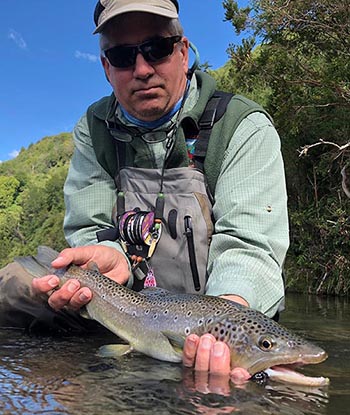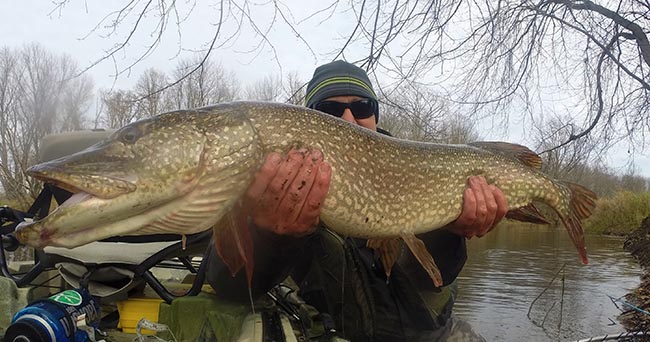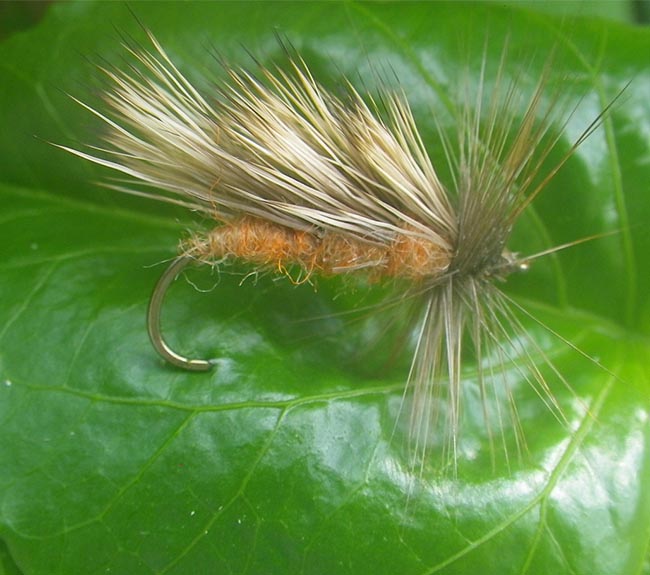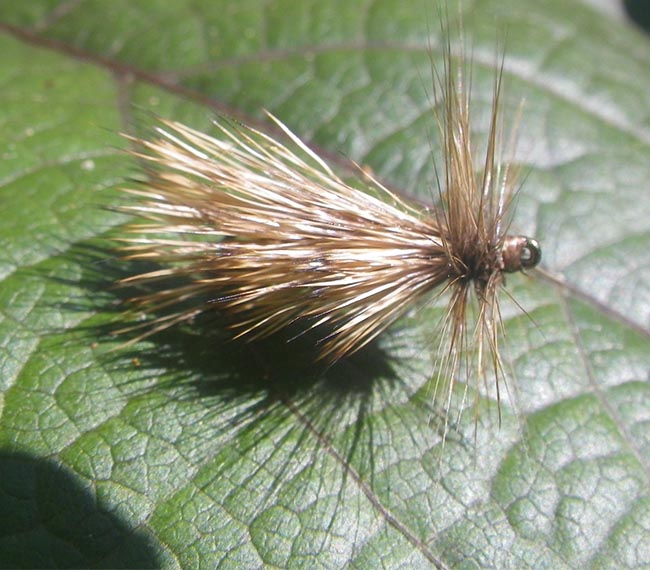


|

|
www.cjtu.org |
October 2020 |
General MeetingVirtual Meeting
|
 |
 |
Do you want to find out about new fly-fishing spots in New England that not everyone knows about and avoid the crowds? Want to try fly fishing for new species like smallmouth, pike, or even stripers (in small streams). Do you desire to discover truly wild places off the beaten path? How about fly-fishing spots you can take your significant other along for a romantic weekend? All these places are part of the presentation, "20 Amazing Places in New England to Fish (that you haven't heard of or tried)" As a bonus, Lou will includ a couple of spots outside New England so outrageous, he couldn't not include them.

Lou Zambello has fly fished northern New England for over 30 years and has been a registered Maine Guide for over 15 years, guiding primarily in the Rangeley area. His e-mail is louzambello@gmail.com. Check out his website which contains his blog, photos, videos, and more at www.mainelyflyfishing.com. Follow him on Instagram @mainelyflyfishing.com. Lou has published three books; "Fly Fishing Northern New England's Seasons, How to fish ice-out, hatch season, summer, the fall spawning run, and winter. (with new bonus section on catching trophy-sized fish", "Flyfisher's Guide to New England", and "In Pursuit of Trophy Brook Trout: The Ultimate Handbook of Tactics, Timing, and Territory." The first is a "how-to" book of tactics and techniques to successfully fish each of the seasons. The second is a guide to thousands of waters in New England - with maps, GPS coordinates, and detailed information. The third is written for anglers looking to catch the fish of a lifetime and describes how, when, and where to catch a trophy brook trout or landlocked salmon.
Lou worked at LLBean for over 14 years and had the opportunity to fish with and learn from a number of fly fishing legends such as Dave Whitlock and Dick Talleur. He has traveled throughout the US and the world to pursue his passion including New Zealand, Patagonia, Labrador, Newfoundland, Russia, the Bahamas, the southeast US, southwest US, Montana, Idaho, Colorado, Wyoming, Utah, and California. This author has been fortunate enough to catch a number of salmonids over 8 pounds including brook trout, atlantic salmon, brown trout, steelhead, and rainbow trout.
 I hope everyone has been enjoying this stretch of fantastic fall weather. The mild days and cool nights have rejuvenated our trout streams. Flows are low and clear, but that is normal for this time of year. The state has begun its fall stocking program this week. Many of our rivers will be receiving a new batch of fish over the next few weeks. As many anglers know, not as many fish are stocked in the fall, but those fish are generally larger. Autumn is my favorite time of year to be on the water. The rivers are usually a little less crowded, the weather is often perfect, and the scenery is beautiful. Of course, the chance of catching a lunker trout certainly adds to the experience as well!
I hope everyone has been enjoying this stretch of fantastic fall weather. The mild days and cool nights have rejuvenated our trout streams. Flows are low and clear, but that is normal for this time of year. The state has begun its fall stocking program this week. Many of our rivers will be receiving a new batch of fish over the next few weeks. As many anglers know, not as many fish are stocked in the fall, but those fish are generally larger. Autumn is my favorite time of year to be on the water. The rivers are usually a little less crowded, the weather is often perfect, and the scenery is beautiful. Of course, the chance of catching a lunker trout certainly adds to the experience as well!
We have been conducting virtual meetings since the spring due to restrictions on public gatherings due to COVID-19. These virtual meetings have been well attended, and we have received a lot of positive feedback from the membership. If you have not participated in one yet, please consider joining us next Tuesday. The meeting begins at 8:00 pm, and you can find the link to join in this newsletter as well as our Facebook feed. These virtual meetings will follow the same format as our regular meetings with a brief business meeting at the start, followed by a presentation. Please consider joining us from your favorite comfortable chair next week!
We are still looking for members that are interested in taking a more active role in the chapter. There are many ways you can get involved. You can volunteer to participate at chapter events (when the resume); you can join a committee or even consider serving on the Board of Directors. Our Board of Directors keeps things running smoothly. It is made of dedicated men and women who genuinely care about Trout Unlimited and the vital work we do. We always welcome others to join us in our fight for clean, healthy rivers.
Our fundraising efforts were severely hampered this year by the virus. Moving forward, we need to take a look at different approaches to fundraise in this new environment. We are planning a virtual, online fundraiser in the early part of 2021. We are still fleshing out the details, but the event may include some online auctions for trips, gear, and services. We desperately need everyone's help! If you have any fishing/outdoor gear in good condition that someone else could use, please consider donating it to the chapter for use as an auction item or prize. Do you own a small business? Why not consider offering a gift certificate or a service as an auction item? It does not need to be fishing or outdoor-oriented! We still have a lot of work to determine if what we plan to do is possible, and there certainly are a lot of details to be worked out. Stay tuned for more information in the months to come. In the meantime, feel free to reach out to me at president@cjtu.org if you would be interested in donating goods or services, and more importantly, if you would be interested in helping us pull this off!
This year's Fly Fisherman Of The Year Contest looks like it will take place on Saturday, November 7th. Things will be very different this year. For starters, there will be no banquet following the event. In its place will be a mid-day BBQ. I am confident there will be a host of other changes and restrictions in place to keep folks safe. I will share new information as it becomes available on our Facebook Page and in next month's newsletter.
I have a quick update on the Weiss Mill Dam removal project. Work is currently being done to facilitate the transfer ownership of the property to the town of Califon. Once that is completed, the project can advance to its next steps.
That's it for now. Please remember to drop in on our virtual meeting next Tuesday, October 13th!
Stay Safe,
Bart Lombardo
CJTU President


CJTU is now part of the Amazon Smile program. By clicking through to Amazon with the above link, CJTU will receive a small percentage based on your purchase.


I’m a big fan of patterns created by a group of Fly Shop and/or Fly Lodge owners in the Northern Rockies. The reason is that these patterns are always well-tested by both their creators and the customers of their businesses. Previously I’ve features patterns by Kelly Galloup who runs the Slide Inn, a lodge and shop on the Madison River, and Craig Mathews of Blue Ribbon Flies, a shop in West Yellowstone, MT. Of course there is our own Bob Jacklin, who was intimately involved in founding CJTU before moving to Montana to start Jacklin’s Flies in West Yellowstone. This month’s fly, Nelson’s Caddis, is a design of Nelson Ishiyama, longtime owner and operator of the Henry’s Fork Lodge, perched on a bluff above the Henry’s Fork in Idaho, just downstream from the famous Railroad Ranch section. I’ve personally fished the Henry’s Fork within sight of this Lodge and can attest that it contains a variety of water, both fast and slow, on which I’m sure Ishiyama has tested his pattern.
I first learned of the Nelson’s Caddis from an article in the March 1987 issue of Fly Fisherman magazine. This article described the pattern being tied in a wide variety of sizes and colors. .I already had plenty of effective caddis patterns in smaller sizes so I wasn’t interested in tying up and trying small versions. But I was intrigued by the use of multiple short hair wings instead of a single longer wing as in the well-known Elk Hair Caddis. This gives a narrower wing profile than the single long wing and seemed to me to be most useful for larger caddis patterns. And the only large caddis I encounter is the October Caddis. So the path toward this month’s pattern began.
The October Caddis appears in late September and most of October in both Western and Eastern streams, hence the name. The western ones are slightly larger than the eastern ones. So I tied up some size 8 and 10 Nelson’s Caddis in October Caddis colors and tried them in the Fall of 1987, both in the Rockies and locally. They worked great and these patterns as then tied, with one exception, have remained in my box ever since. Ishiyama’s original has two stripped hackle stems as antennae. I found these tangled with my tippet both when tying on and fishing the fly so I eliminated them after my first season of fishing the pattern. Without them the pattern continues to work just fine.
The pattern is simple to tie requiring only hook, thread, dubbing, elk hair and hackle. Getting the right amount of hair in each stack requires a little practice. A variety of dubbings can be used but I like mostly synthetic ones since they shed water easily and have a little sparkle. You can use either a brown or furnace hackle but I prefer furnace since the black center yields a nice head silhouette when wound, Finally, a ring eye hook seems to make the fly easier to skitter than a down eye one.
An October Caddis pupa crawls up on a streamside rock where it hatches into an adult. From there it finds its way to the water surface where it can drift quietly for a while but then has a tendency to skitter across the water surface. Since this big caddis represents a large caloric intake, trout are eager to seize it and the rises can be explosive. So fish this fly on a heavy tippet. Dead drift it along seams and then twitch it. You can even lift the fly off the water a bit and redrop it. The collar hackle helps you skitter the fly and with all that elk hair in the wing the fly is not going to sink. Trout love this pattern. So should you. Time to fish it is NOW!